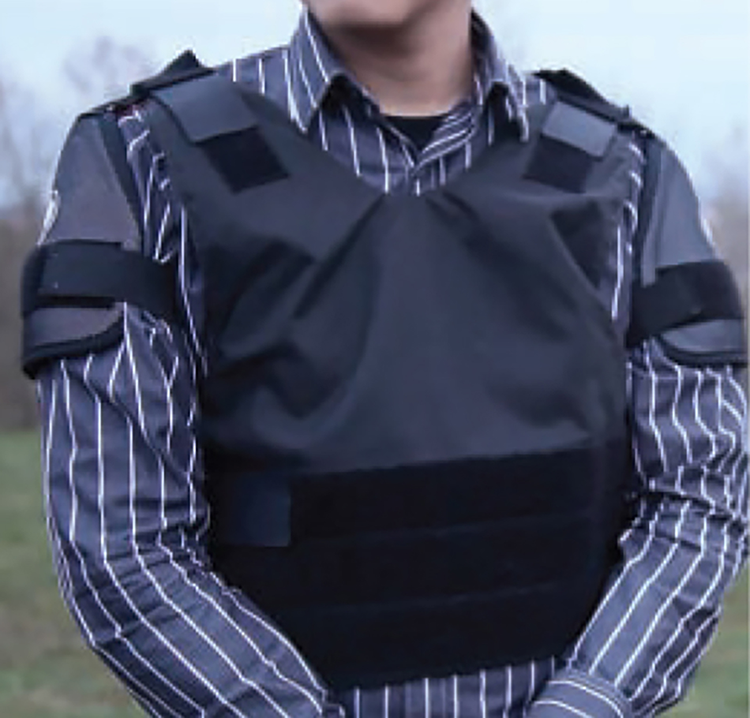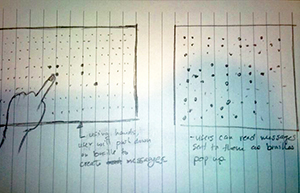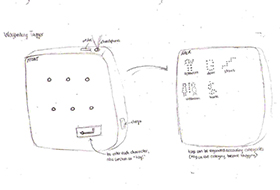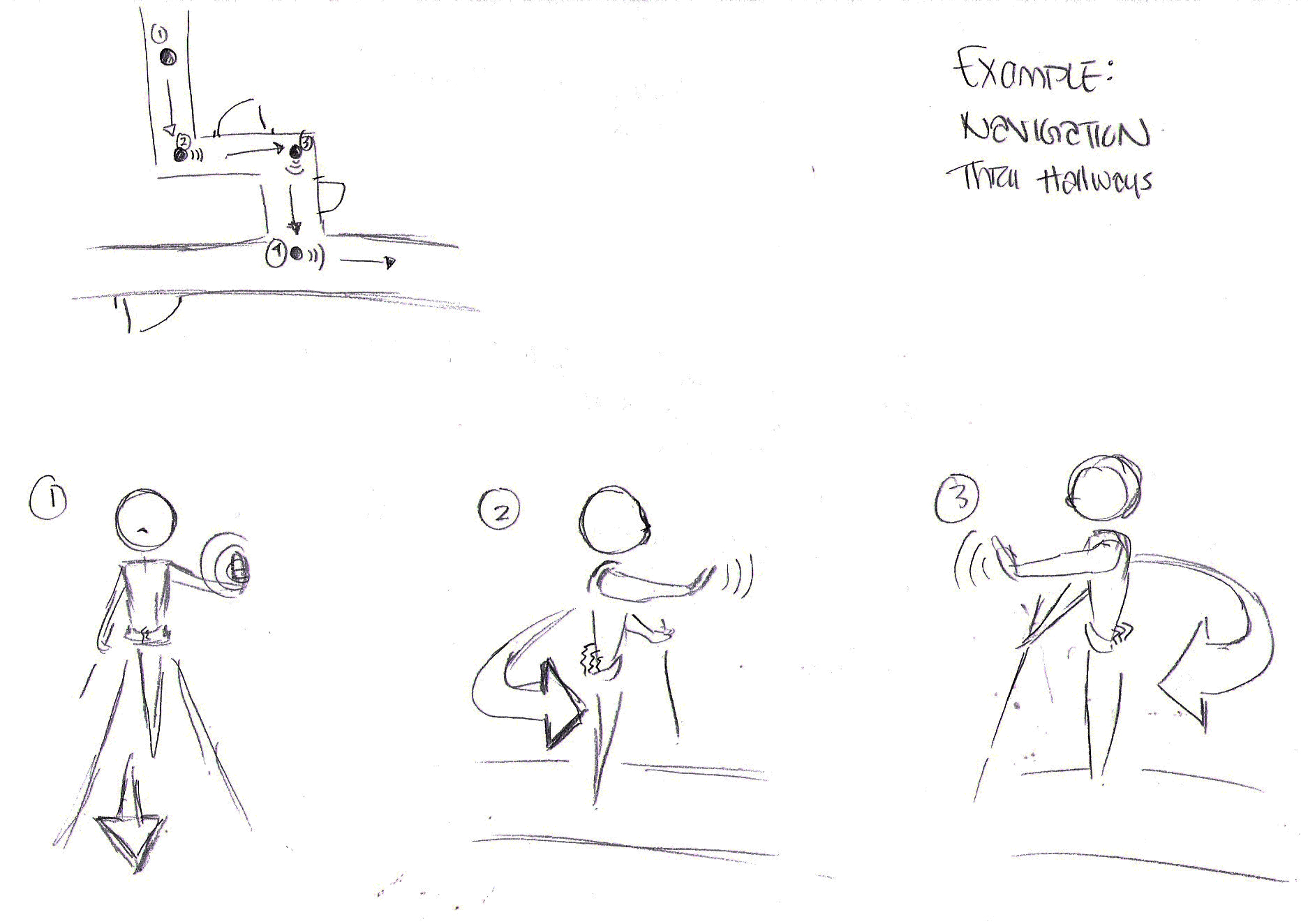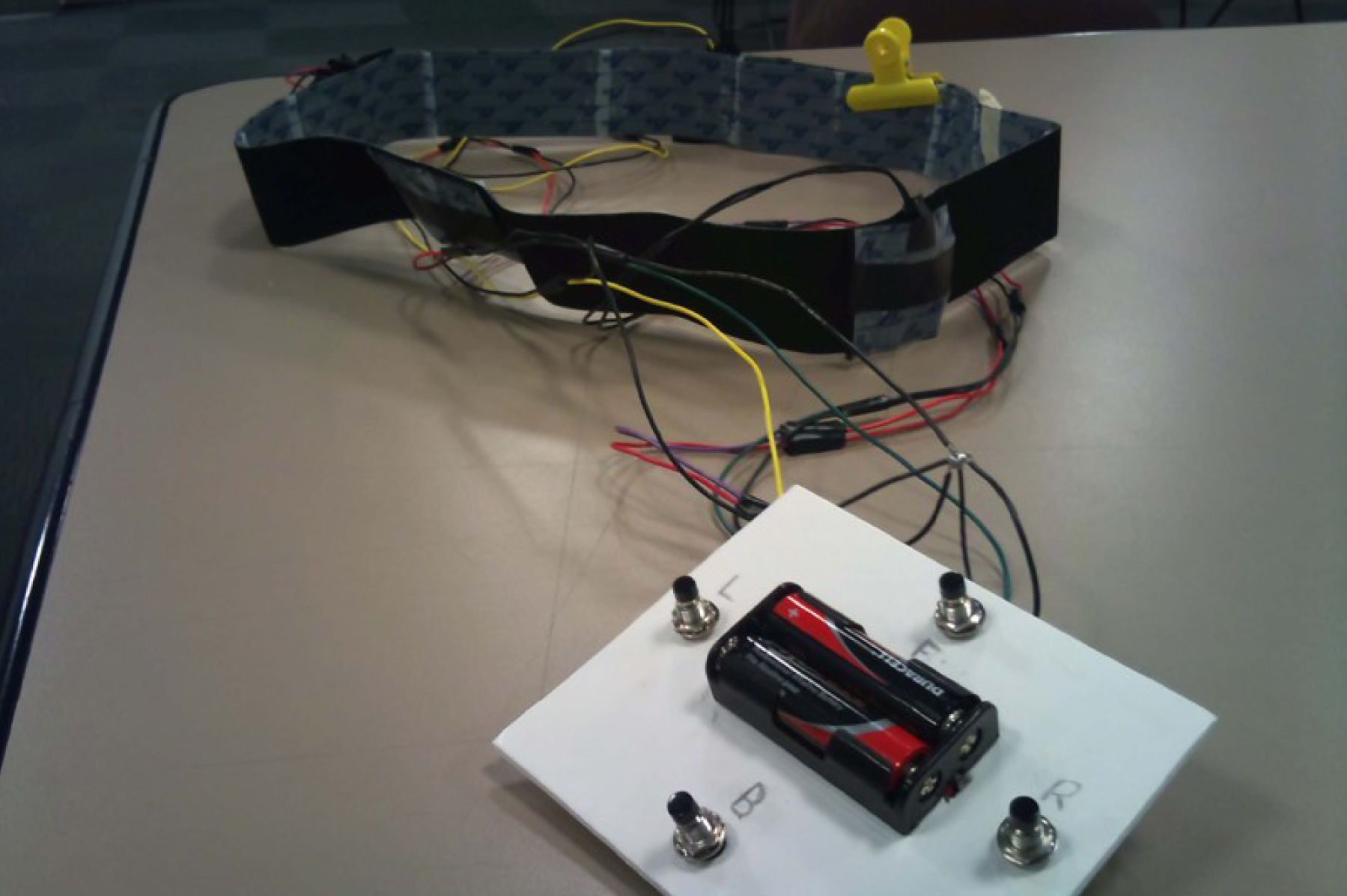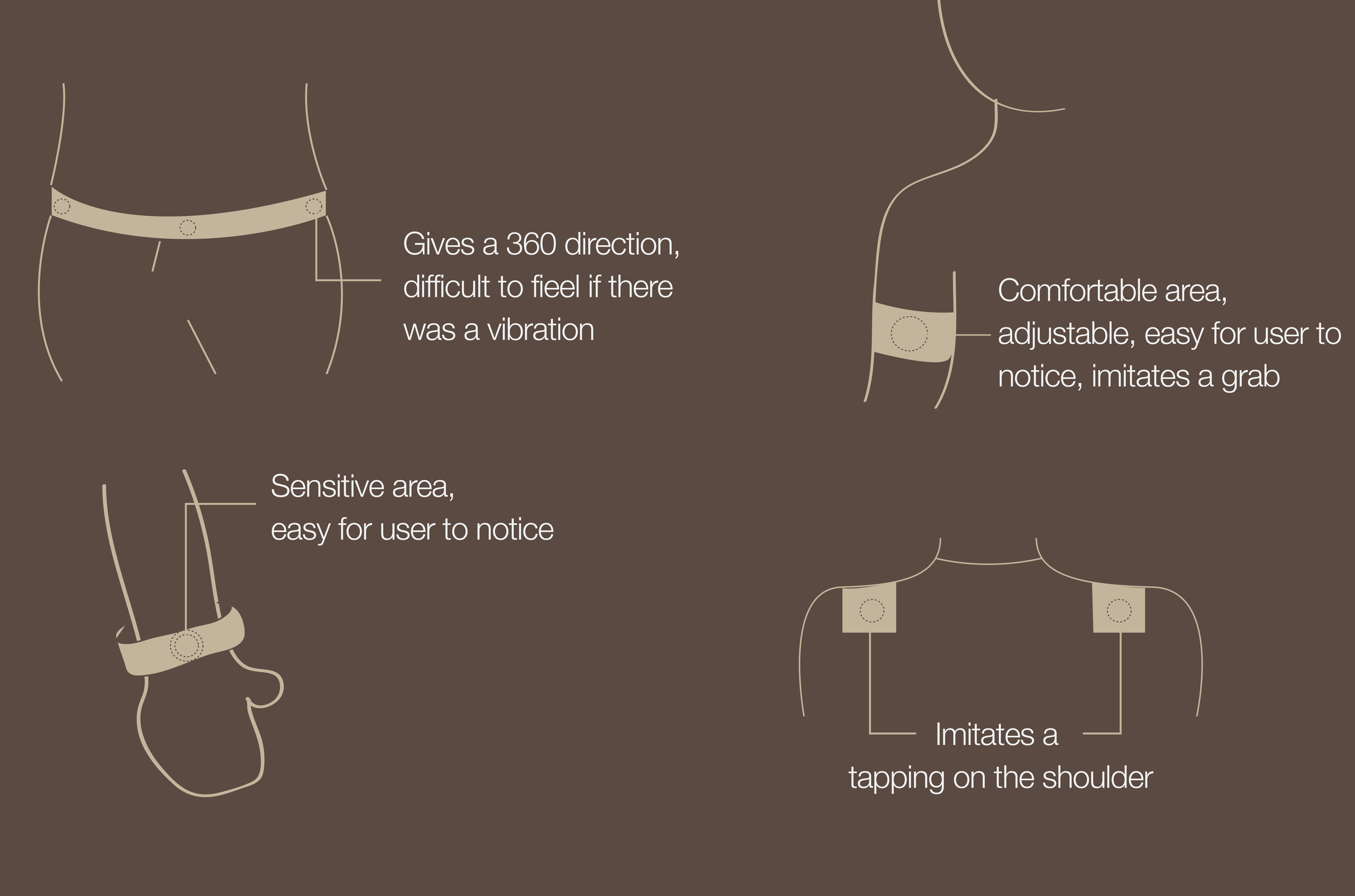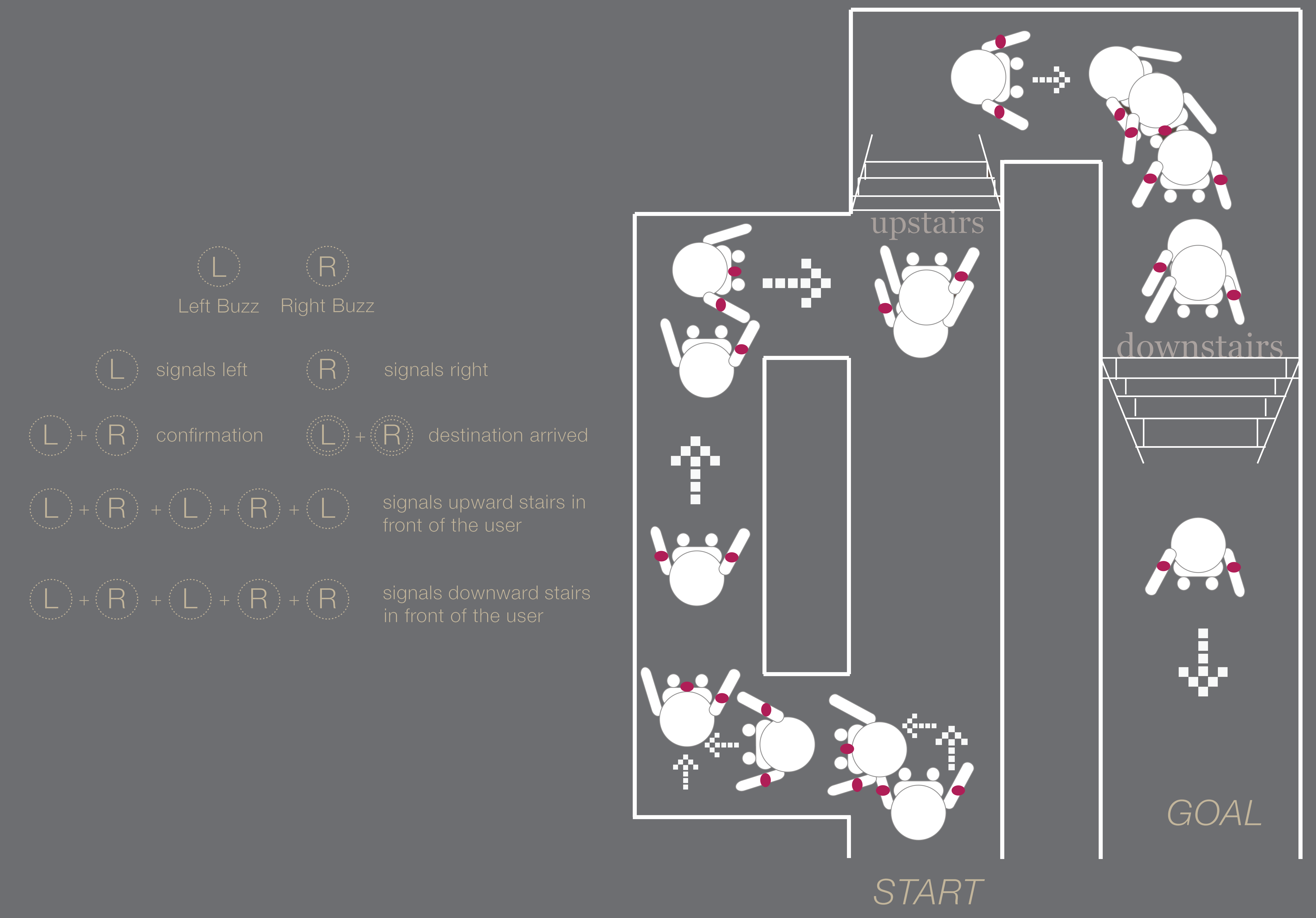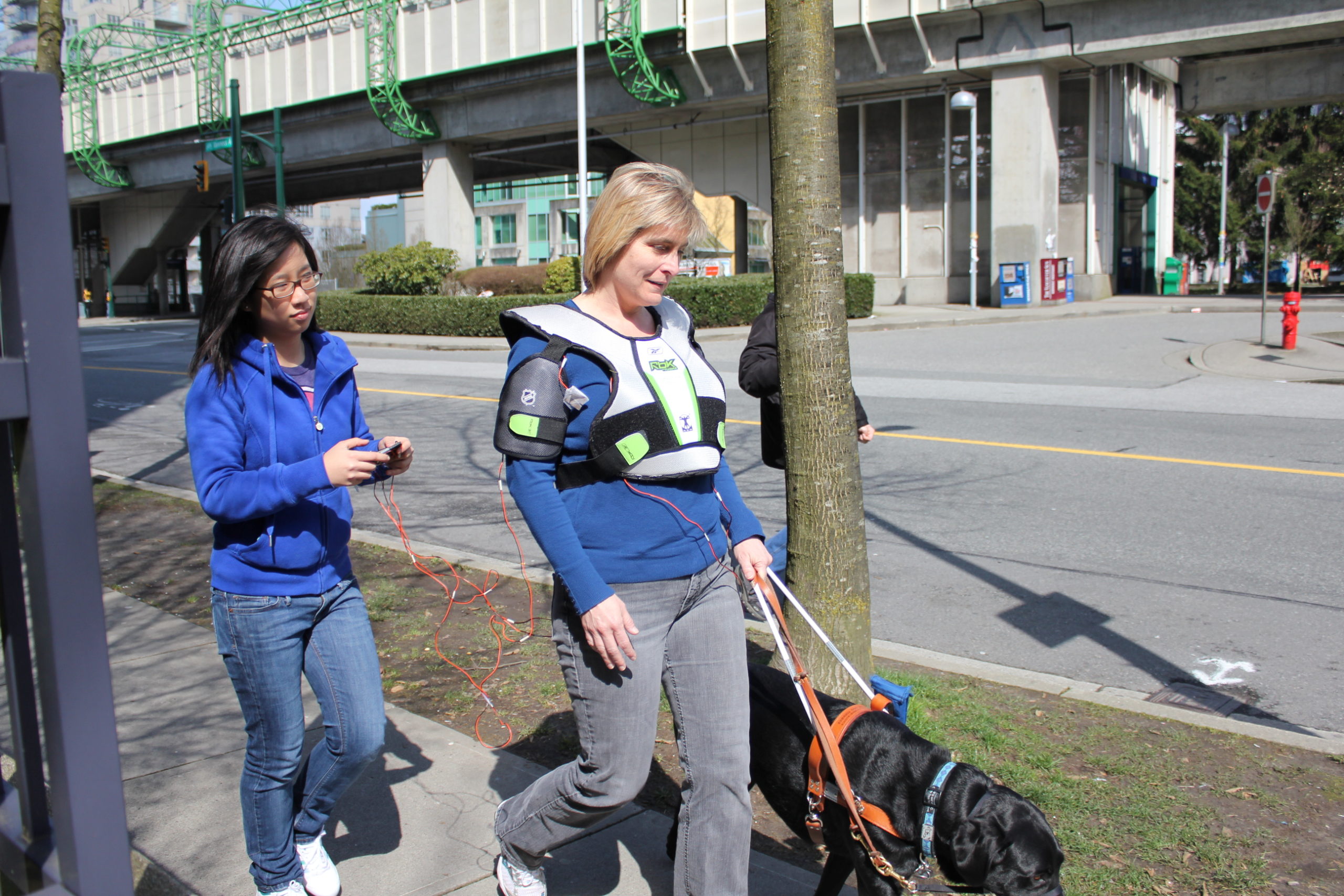A wearable, tactile GPS garment that allows visually impaired people to travel independently.
“Point Locus” uses tactile sensations on the user’s triceps to communicate directions from a GPS. Its language is a simple series of vibrations: left tricep for “left turn”, right tricep for “right turn”, both triceps at once for “forward”, and a longer vibration from both sides for “arrived”. It acts like a car GPS, warning slightly in advance of upcoming turns, and giving the “forward” signal at an interval to verify one’s course, keep the user attuned to the vibrations, and make sure they know the device is working.
For visually impaired users, for whom this project was aimed to serve, use of a cane or a guide dog in tandem with this device allows them to use existing adaptations to navigate immediate surroundings, and Point Locus to be guided along a path to their intended destination. The result is a fully independent experience as a traveller, which is normally very difficult for a visually impaired person, due to not being able to picture where in space their intended destination is. The device also provides a tactile, hands-free alternative for GPS way finding for anyone who prefers this kind of interaction over using maps and screens.
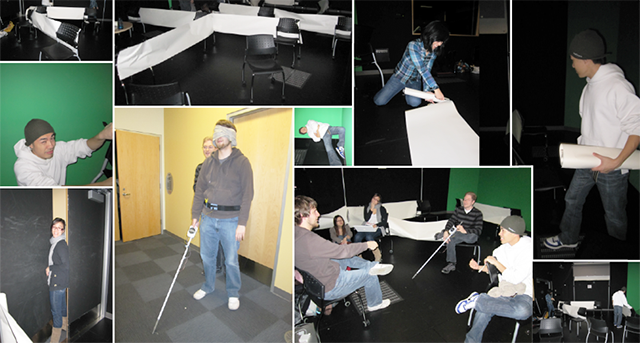 This project was designed in an undergraduate capstone course at Simon Fraser University: it was the result of an eight month long design process conducted in a team of five Interactive Arts and Technology students, in which I took on the roles of team leader, design research lead, content writing lead, and prototype building. Below, I have outlined the full design process, and the numerous design competencies I developed over the course of the project:
This project was designed in an undergraduate capstone course at Simon Fraser University: it was the result of an eight month long design process conducted in a team of five Interactive Arts and Technology students, in which I took on the roles of team leader, design research lead, content writing lead, and prototype building. Below, I have outlined the full design process, and the numerous design competencies I developed over the course of the project:
 Initial Concepts
Initial ConceptsTo establish a concept direction, the focus was on sketching ideas. Many of our earliest ideas were solutions for visually impaired users, as I expressed an interest in inclusive design for such an audience.
 Problem Definition
Problem DefinitionWe made a conclusive choice to design for a visually impaired audience, and conducted interviews to establish a problem. We found consistently that our interviewees were concerned with becoming more independent in everyday life.
 Navigation/Way Finding Concept
Navigation/Way Finding ConceptOur research led to the goal of helping visually impaired people be able to travel independently, in accordance with insight from interviews. To make use of non-visual senses, we developed an auditory navigation tool and a tactile way finding tool and gave them each a few different form options.
 Prototyping + User Test 1
Prototyping + User Test 1We prototyped both a cane-mounted and glove- mounted ultrasonic rangefinder that produced faster tones depending on proximity, and a manually controlled vibrating belt for directions. We set up a paper maze mounted on chairs and had both visually impaired and sighted, blindfolded users navigate it using both prototypes. We found that the visually impaired users neglected the rangefinder and used their canes and/or guide dogs normally.
 User Test Insights + Form Exploration
User Test Insights + Form ExplorationWe concluded from the user tests that a navigation aid was not necessary, due to existing adaptations, but that a way finding aid had strong potential. The tests also showed that a belt may not be the ideal form, as frequent vibrations so close together on the body resulted in less sensitivity to each signal over time. We began to explore other forms, such as wrist, shoulder and tricep-mounted vibrating actuators.
 Language Development + User Test 2
Language Development + User Test 2Continuing to develop our form and language of vibrations, we removed our “forwards” and “backwards” signals, and moved to a “stop and rotate” interaction to allow only two actuators to express precise directions to turn in (or reverse). We used ourselves, blindfolded, for user testing in order to quickly validate our new language and form factors and reach a decision on how best to move forward.
 User Test 3 + Confirmation of Insight
User Test 3 + Confirmation of InsightAfter deciding on using the tricep-mounted actuators as our form, we built a prototype using a hockey chest guard, and developed the language once more, to operate like a car GPS, giving directions just in advance of a turn. This proved more effective when we conducted a user test with five visually impaired users, who were easily able to follow the directions and instruct their guide dogs where to go.
 Finalization + Presentation
Finalization + PresentationTo wrap up the in-class portion of the project, we crafted a presentation that visually communication our intended interaction design, technical specifications for the final prototype, user study results and next steps. We were not able to make a fully functional GPS-enabled garment (only manually-controlled), so we speculated on how to realize it.
Point Locus from Stephanie Wiriahardja on Vimeo.
Our research and evaluation of the concept has proven that this idea has the potential for widespread acceptance and use. Participants learned how to interpret the feedback and use it to navigate unfamiliar streets in moments, indicating a very low learning curve, and response to the conceptual device was, on the whole, overwhelmingly positive. I am intending to further pursue the full technological realization of the concept in the future, once I have the opportunity to do so.
Maker Faire 2011 (San Francisco & Vancouver)
At the time of the end of our capstone class and the final presentation for Point Locus, we posted about the project on several different social media platforms. This caught the attention of Lynne Bruning of the eTextiles Lounge, who invited us to present our project at the 2011 Bay Area Maker Faire, since the project fell into her interest in wearable technology.
During Maker Faire, we set up a booth and pitched the project to several hundred passing attendees, and also participated in an eTextiles fashion show. Near the end of the weekend, we also did a live interview with Mair Dundon and Alexa Smith of the Artfuture blog. The event was intense and very enjoyable, and we found that our project struck a chord with almost everyone we talked to; once we described the “vibration on the triceps” concept, almost everyone immediately understood, and their eyes lit up with interest.With Lynne’s help, we also managed to get ourselves a booth at the 2011 Vancouver Maker Faire, and went through a similar experience in our home city.
